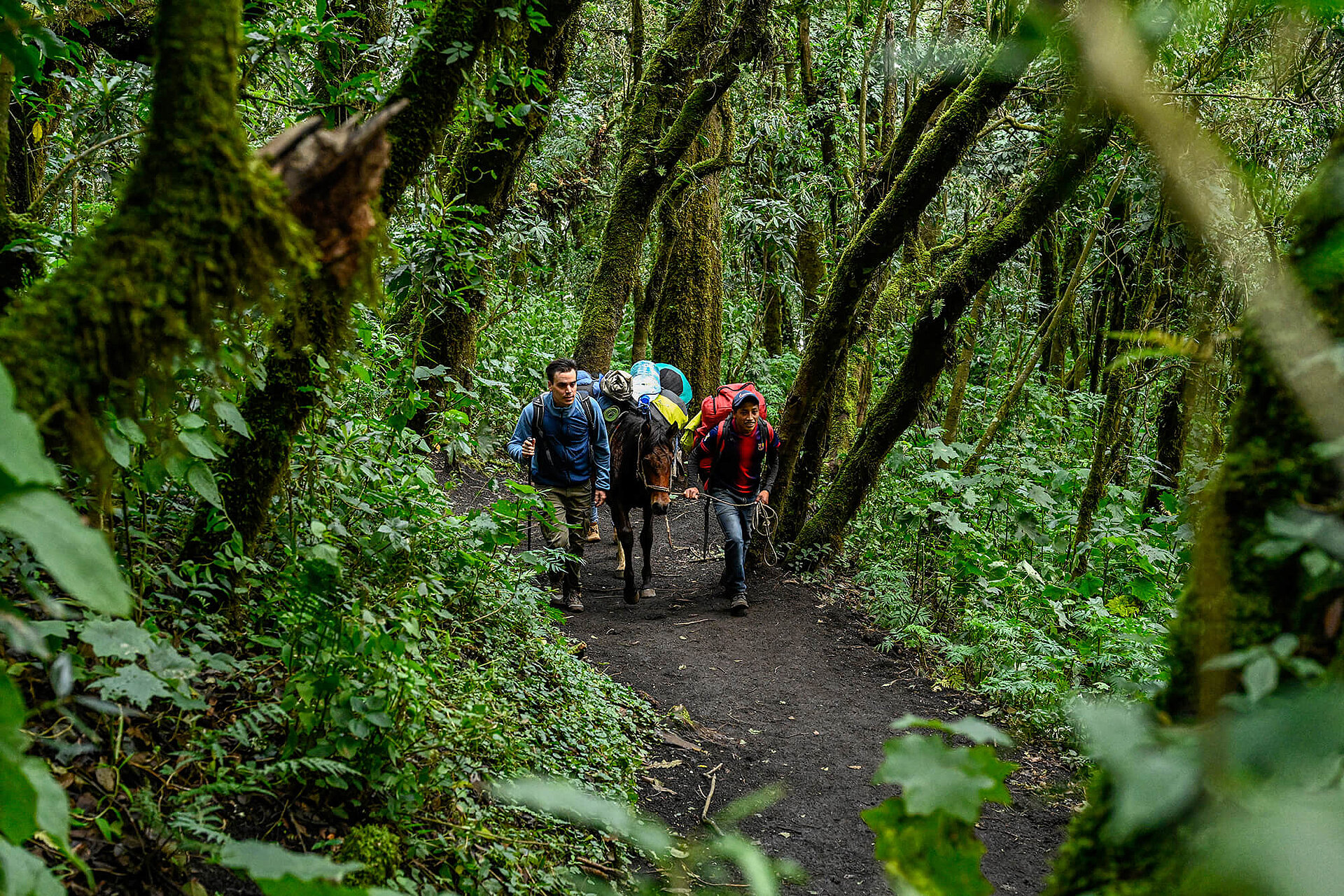Felix Wölk and Pablo Heidenreich find themselves in a Central American witch's cauldron while flying at the 3,976 metre high Acatenango. This is an adventure involving air and fire, which becomes a feat of tightrope survival at cloudbase.
The thunder of the erupting Volcano of Fire resounds through the paper-thin walls of the tent. Barely two kilometres away the voice of the most active volcano in Central America allows us no sleep. I open the tent entrance zip to take a look at the fiery spectacle: lava fragments and glowing rocks rain from a fading ball of sparks. They briefly light the black flanks of a 3,830 metre high cone a blood-red colour, where smoking rocks roll down towards the valley. I force myself to close my eyes. Barely acclimatised to the altitude, I am troubled by a sense of unease at the prospect of the adventure which awaits. A calm weather window is forecast for the morning, the last one. After that the north wind will persist. This will be our third attempt at flying the Acatenango – and our last chance.
On the Volcano
It is four in the morning. I can’t tell if I have slept or not. Pablo has already packed the rucksack. We trudge off into the dark night. In the helmet lamplight the lava dust swirls up with every step. Breathing is difficult. At 3,800 metres we reach the barren part of the volcano which rises up out of the Pacific coastal plain; nothing grows here. The climb to this height was a journey through various climate zones: from the heat of the valley we walked through the fertile farmed land, then up through dripping jungle with a humidity of near a hundred percent. This was followed by a mysterious world of dead trees, very likely a victim of a rain of ash. Only at an altitude of 3,700 metres do we reach the wasteland of the high mountains, which here consists of sand and lava rock.
Unpredictable magnificence
Dawn breaks as we reach the crater. The wind seems to be asleep today; we feel only the lightest of its whispers. Every few minutes 'el Fuego’ breathes thick ash clouds into the morning sky. Far below, Guatemala lies under an unbroken cloud blanket. On the horizon the equatorial sun rushes up into the day. A surge of colour, detail and contrast floods across the white sea surface. Pablo and I try to read the air from the cloud picture. Assessing the situation is a delicate matter. This early in the morning it should be flyable – we hope. Quickly we are ready for take-off. With this third but airborne descent imminent I pull up my wing. After five steps I Iift off from the crater rim, quietly suspecting that it will be an adventure with a wrecking ball.
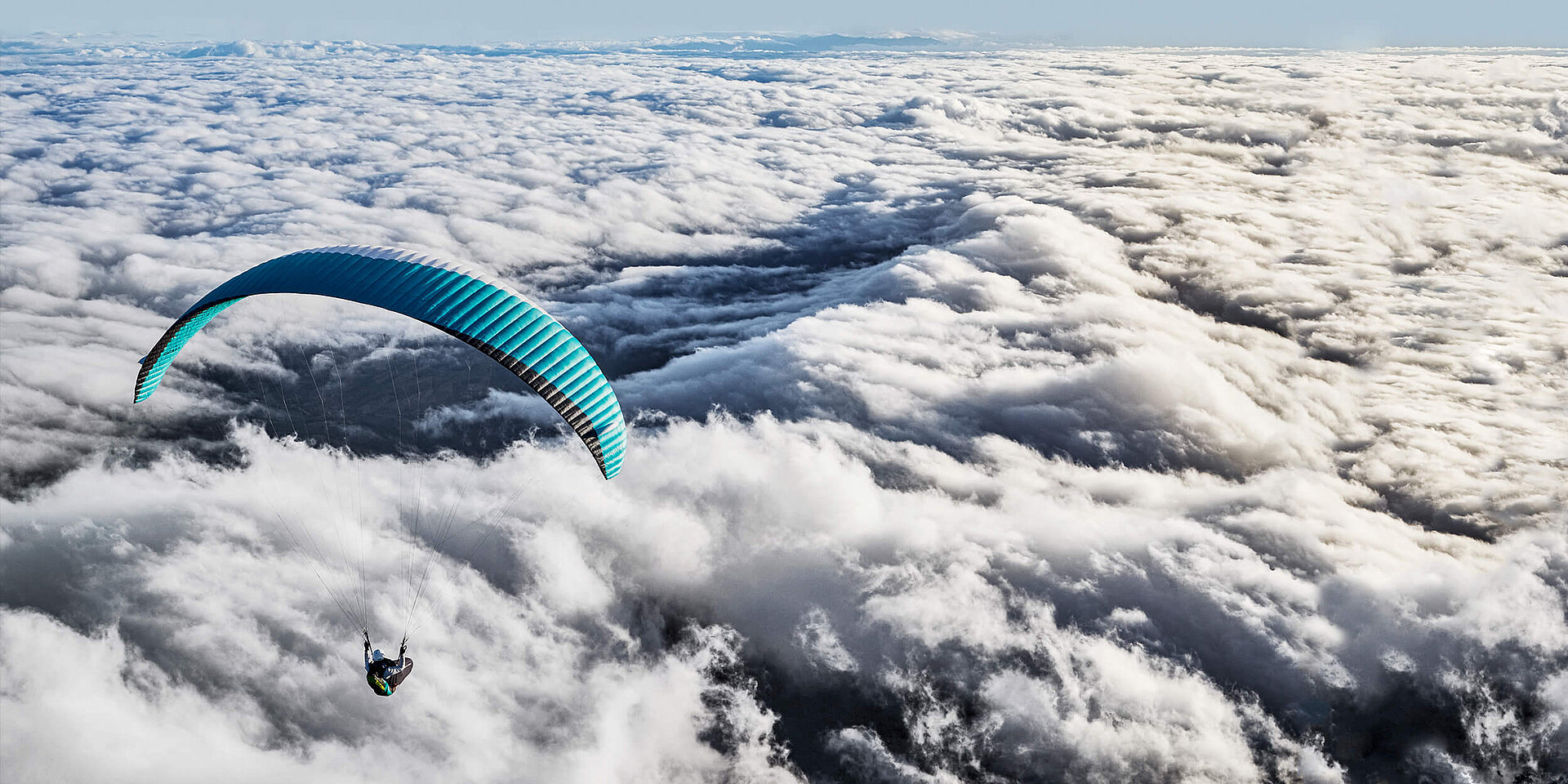
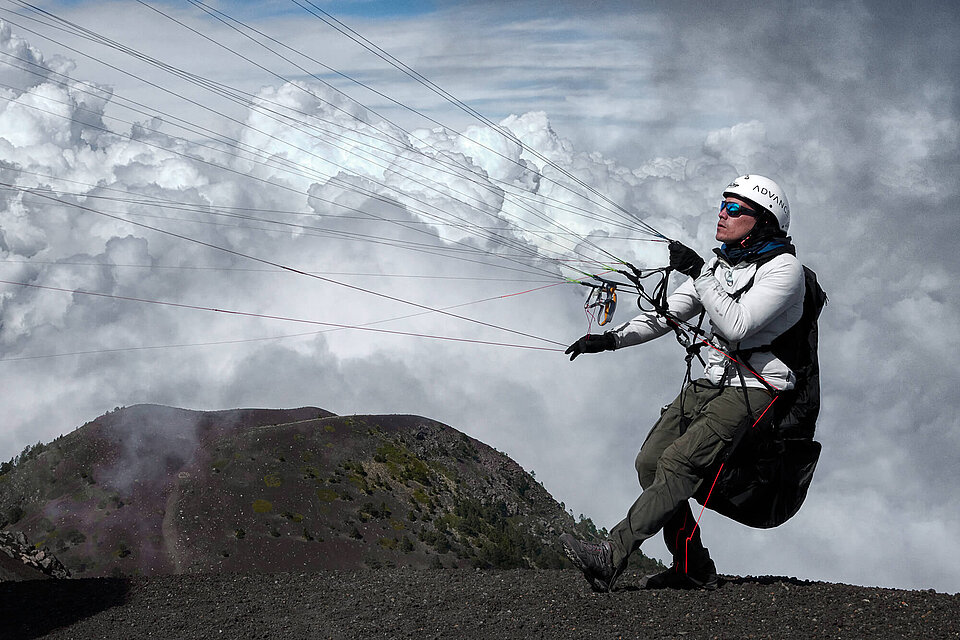
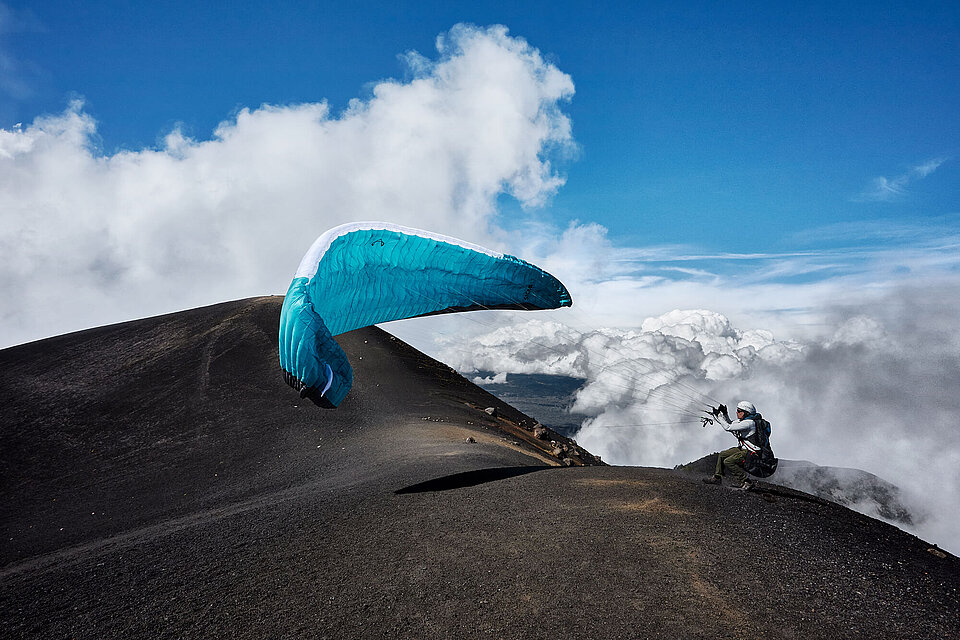
One atmosphere – two worlds
A flight in the heavens begins. Below us is a sea of white. It seems to be covering all of Guatemala. But the picture below concerns me. By the minute the cloud detail changes. After 15 minutes of glide without the slightest evidence of air in motion we reach the cloud top. It’s the door to a different world, one in which a dream becomes a nightmare under the cloud. A moment later we’re standing in the wind. I step on my speedbar. Then an invisible wall pushes me backwards, towards the south. I radio Pablo. He is behind me, fighting the headwind but getting smaller. “70 km/h wind from the north”, he reads out from his GPS. We do not delay, turn round and run with the jet effect alongside the volcanic cone rising from its plain. At 110 km/h groundspeed we are racing towards the Pacific. The air gets rough, I begin to climb, stand on the speedbar and hear the slap of the first collapse.
The Föhn wind from the north is confined under the cloudbase by a ‘braking’ layer, a layer of warmer air which stops vertical convection progress. At 70 km/h there are waves and rotors in it. A southerly sea breeze from the Pacific coast pushes against it. We are in the middle of a poisonously turbulent convergence (collision) zone, bubbling and tumbling below the inversion layer. This is serious. Pablo has been blown away. I see him swing about wildly 400 metres higher, far to the south. I meet the next invisible missile strike. My wing becomes a bag of washing. OK, wait, let it fill, let it fly. While travelling backwards a struggle for every centimetre begins. In the hard-edged non-stop turbulence I fight against the climbs and the hits. I too swing wildly. To avoid collapse problems when the glider is not above me, I soon follow a daring tactic: I let collapses happen and only try to fill them in a controlled way when the glider is above me. Again and again I shoot up like a rocket, then again and again all the cells in my wing are empty of air. My nerves are at breaking point. I force myself to adopt rhythmic breathing and steely concentration. About 100 metres above the ground I step resolutely on the speedbar and get rid of 50 of these metres with a shaking wing but without collapse. Now I’m travelling forwards. I make it to a field, stand still in a gust then shortly after have ground contact, ready with two brake wraps on one side and A-risers gripped on the other! At the first touch of feet I rip both sides down savagely and stagger backwards. The disabled wing crashes to the ground behind me. I’m standing up, albeit with shaking knees. Feeling exhausted I radio Pablo. He can speak, and is standing on his two legs. I fall to the grass with relief, and take a deep breath.
The complexity of adventure flying
Pablo and I go back to Antigua in the public 'Chicken Bus'. Pablo quotes incredulously from his GPS: “Take-off 6:45 a.m. Maximum climb 11.4 m/s. Maximum wind 72 km/h.” He sums up ironically: “A nice morning flight.” I think about it, having just survived the most demanding flight of my 28-year paragliding career. A predictable paraglider and some luck helped everything turn out well in the end. Today I was reminded of the risks of adventure flying: A foreign country with its complex local weather systems, the lack of experience in the unknown, the pressure of time and success as a photographer.
The Equipment
The team
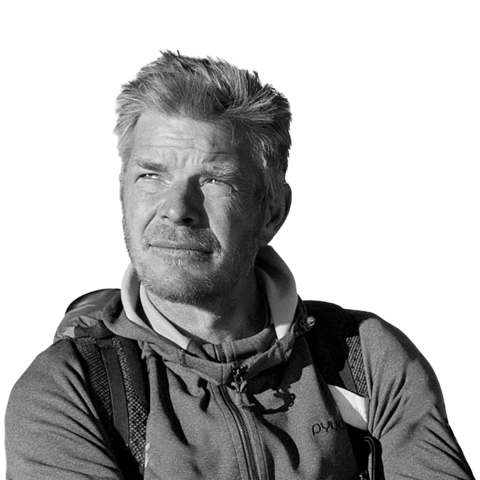
Felix Wölk
Felix is a paraglider and hangglider pilot, parachutist and mountain sportsman of the old school. For two decades he has enjoyed a worldwide reputation as a celebrated paragliding photographer.

Pablo Heidenreich
Pablo has been flying since 2011 and four years ago made his passion his job. In the summer he can be found here and there in the Alps, working as a flying instructor, but the cold European winter sends him back to South and Central America.


